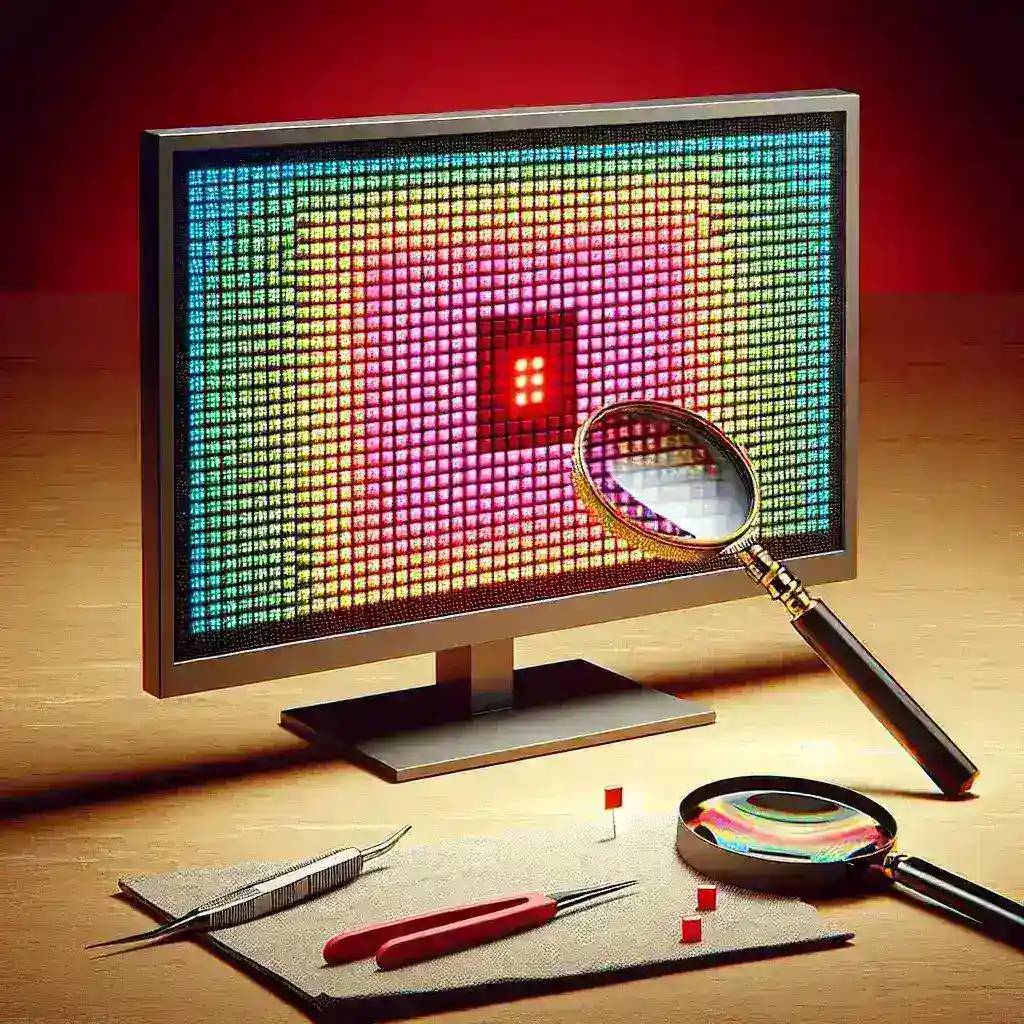Dead pixels can be frustrating and significantly impact your viewing experience. A dead pixel on an LED monitor is a pixel that no longer responds to input from your device, resulting in a black, white, or colored spot on your screen. There are several methods to identify and potentially fix dead pixels on your LED monitor. This guide will walk you through identifying, diagnosing, and fixing a dead pixel on your LED screen.
Identifying Dead Pixels
Before you attempt to fix a dead pixel, you need to identify it. Follow the steps below:
- Display a full-screen color image on your monitor. A single color background is best for spotting dead pixels.
- Look closely at the screen to spot any pixels that appear black, white, or stuck on a single color.
- Use pixel-testing software, like ‘Dead Pixel Buddy’ or ‘InjuredPixels’, which can help you easily detect any dead pixels.
Dead Pixel Identification Table
| Pixel Type | Appearance |
|---|---|
| Dead Pixel | Always black |
| Stuck Pixel | Shows RGB colors (red, green, blue, white) |
| Hot Pixel | Always white |
Diagnosing Dead Pixels
Once you have identified a dead pixel, diagnosing the type is the next step:
- Do a thorough check-up with different color screens to determine if the pixel is dead, stuck, or hot.
- Gently press around the pixel with a soft cloth to see if there is any temporary improvement.
- Use diagnostic tools and apps to confirm whether the pixel is truly dead or just temporarily unresponsive.
Methods to Fix a Dead Pixel
Now that you have identified and diagnosed the type of dead pixel, try the following methods to fix it:
1. Software Methods
There are several software tools that may help revive dead or stuck pixels:
- Run pixel-fixing software such as JScreenFix or UDPixel, which rapidly changes colors to reactivate the pixel.
- Use online tools that display rapidly changing colors and patterns designed to reset the pixel.
2. Manual Methods
Manual intervention may be necessary if software methods do not work:
- Pressure Method: Turn off your monitor and gently press the area with the dead pixel using a soft cloth. Turn the monitor back on while keeping the pressure for a few seconds.
- Tapping Method: Lightly tap the area where the dead pixel is located with the tip of a pencil or stylus wrapped in a soft cloth.
3. Thermal Cycling
Sometimes, alternating between hot and cold environments can reset a pixel.
- Turn off your monitor and let it cool down completely.
- Then, turn it back on and let it warm up for a few hours.
- Repeat this cycle a few times.
Preventing Dead Pixels
Prevention is always better than cure. Follow these tips to minimize the risk of dead pixels:
- Keep your monitor away from high heat or humidity environments, as extreme conditions can damage pixels.
- Clean your monitor regularly with appropriate cleaning tools to prevent dust accumulation.
- Use screen savers to avoid prolonged display of static images, which can lead to stuck pixels.
When to Seek Professional Help
If none of the above methods work and the dead pixel remains, it might be time to seek professional assistance:
- Consult the manufacturer’s warranty. Some warranties cover dead pixels depending on the severity.
- Take your monitor to a professional repair shop for a detailed inspection and repair.
Conclusion
Dealing with dead pixels can be annoying, but many times, they can be fixed with some patience and the right methods. Whether through software tools or manual techniques, you have several options to try before seeking professional help. Ensure you follow preventive measures to minimize future occurrences and maintain the quality of your display. Always remember, if in doubt, consult a professional to avoid causing further damage to your monitor.

